
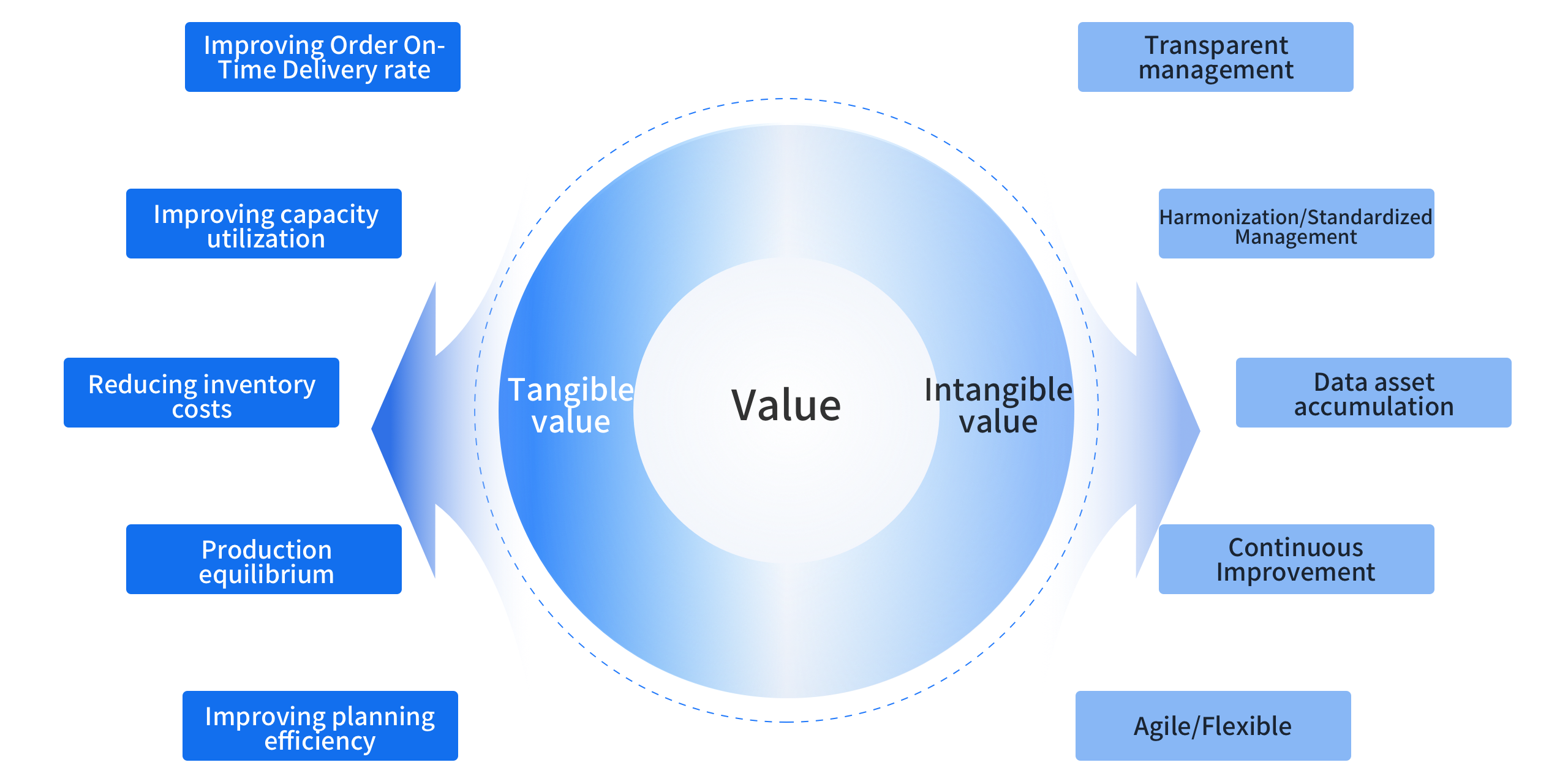
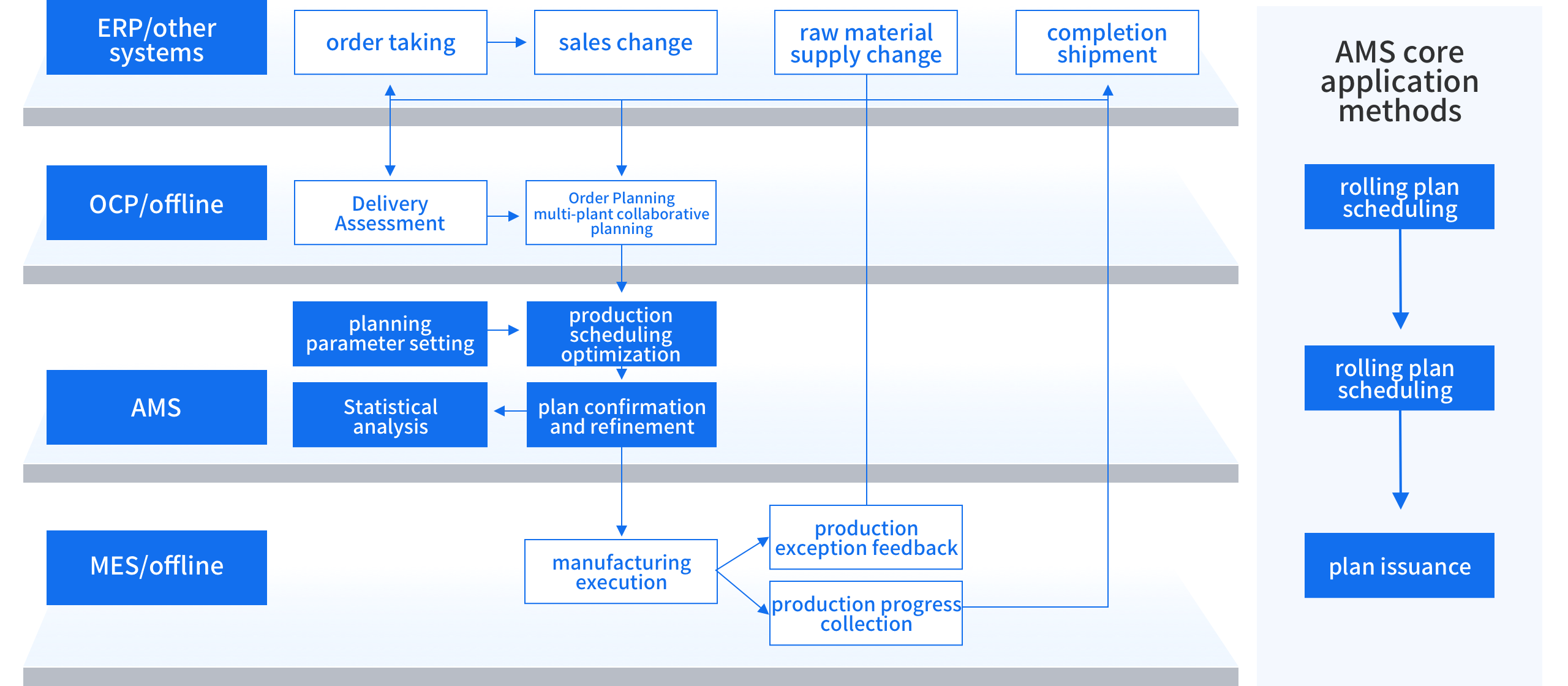
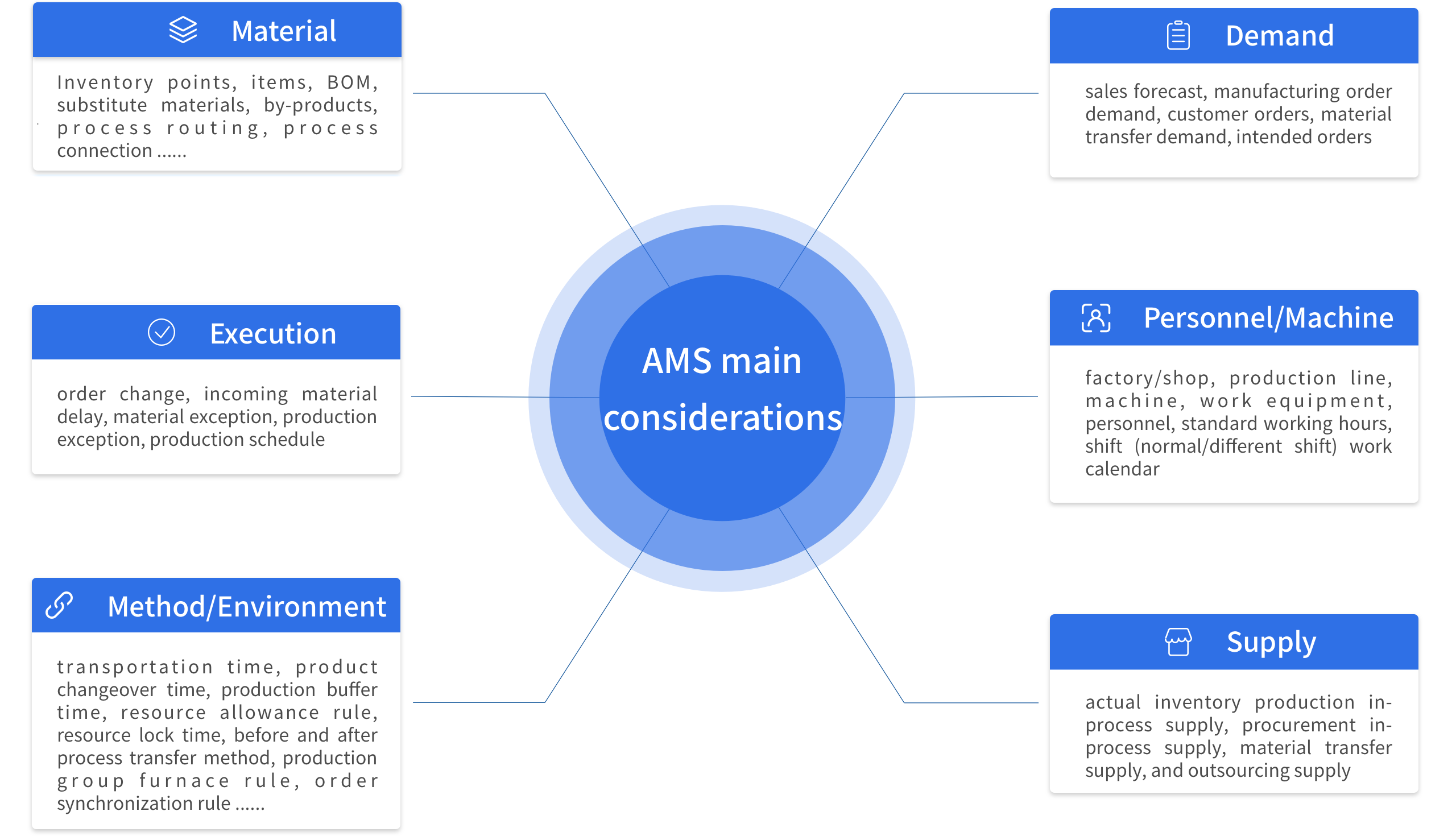
Configurable multi-organizational scheduling
Production routing and order allocation
Limited capacity planning
Upstream and Downstream Collaborative Manufacturing
Assessment of demand/supply imbalances
Fast delivery assessment
Simulation analysis and comparison of multiple plan versions
Adjustment of capacity and materials
Out-of-material impact
Plant
Stock Point
Item
Master Resource Group/Master Resource
Tool Resource Group/Tool Resource
Route
Process
Work Shift
Resource Calendar
Schedulable Resource
Calendar
BOM



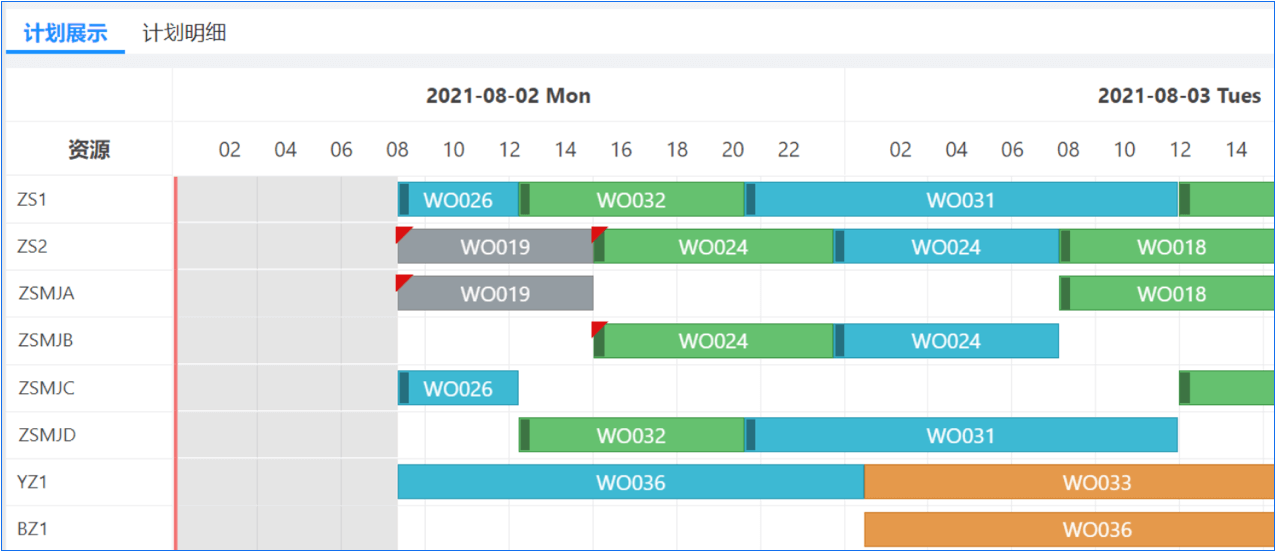
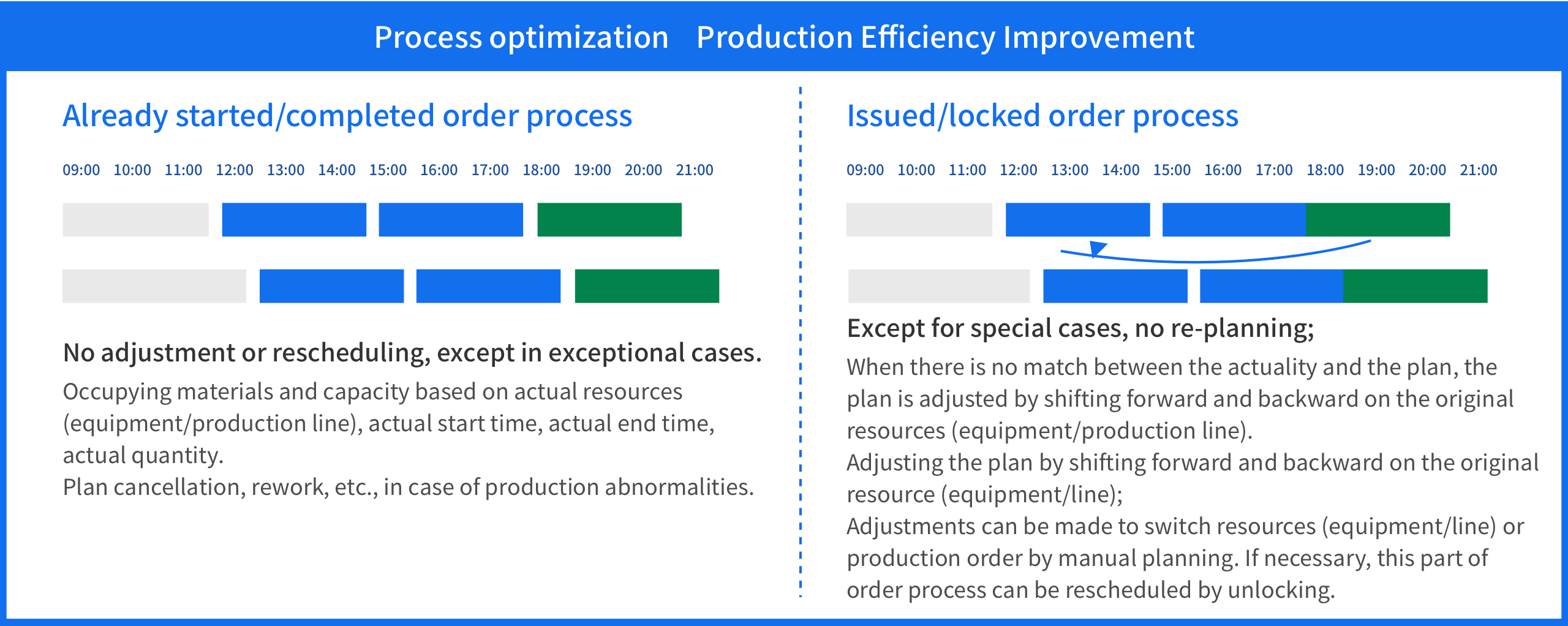
Visualizing and managing machine operation sequence and capacity load
Analyzing material inventory levels and visualizing inventory loads
Dashboards and statistical reports to provide data support for plan evaluation and improvement
Providing detailed analysis of order delivery delays
Plan simulation analysis and multi-version comparison
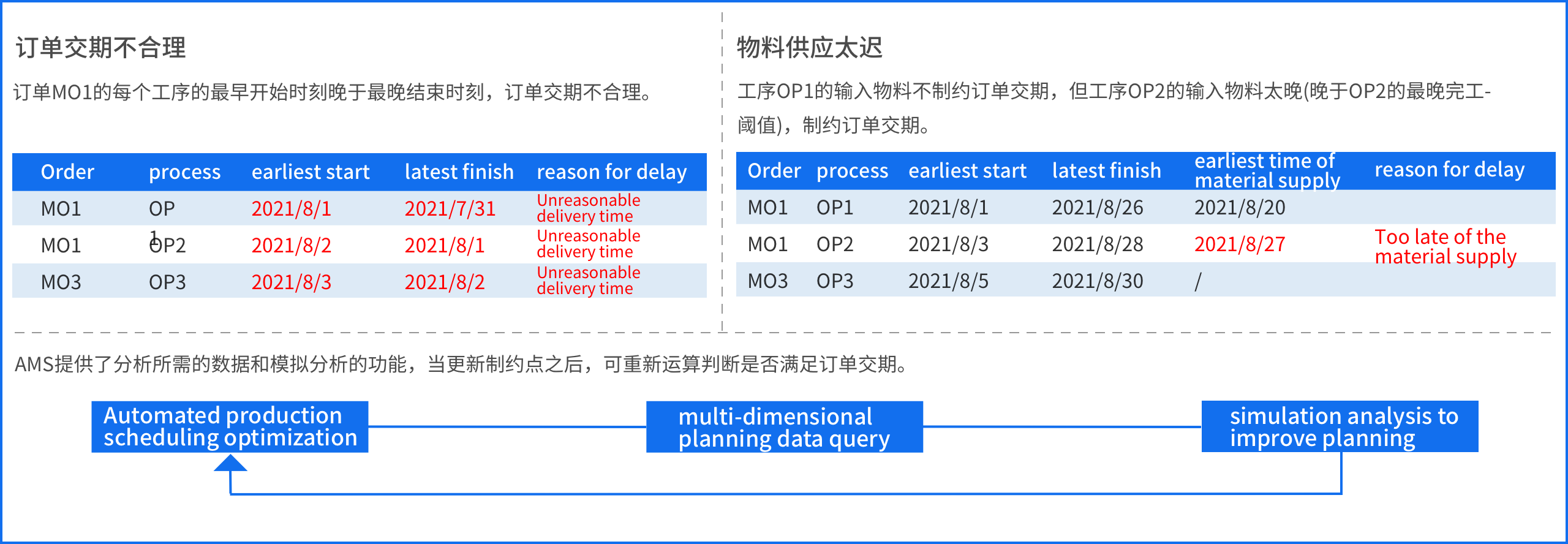

On-site processing, Plan adjustment in next planning cycle
Adjusting the plan immediately and reissue it
Obtaining the abnormality information
Assessing the impact of the abnormal: order suspension, postponement, etc.
Simulation analysis and plan adjustment
Collaborating with upstream and downstream departments on planning
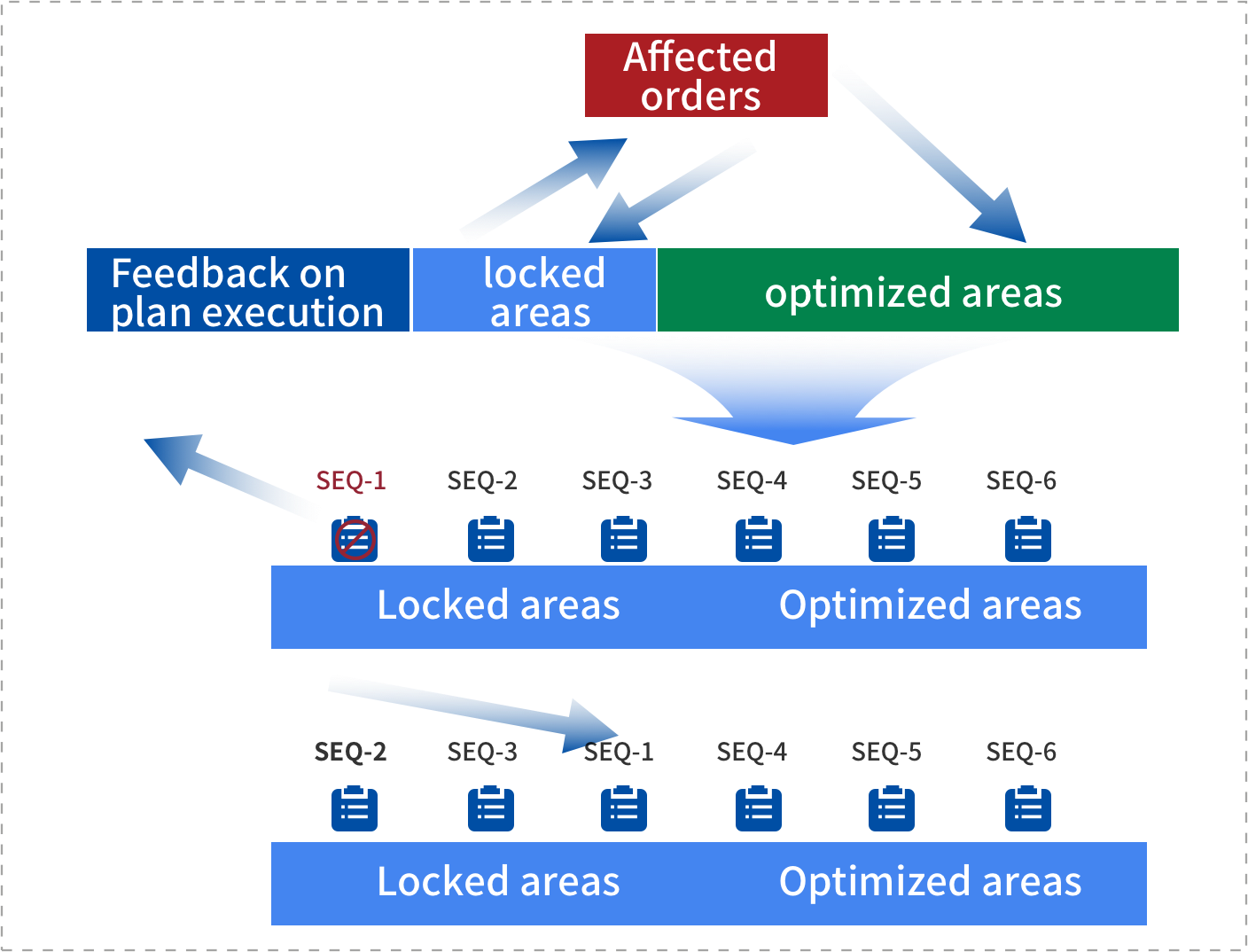
If you need help of UHAlean's products, please leave the message, we can help you quickly customize solutions.